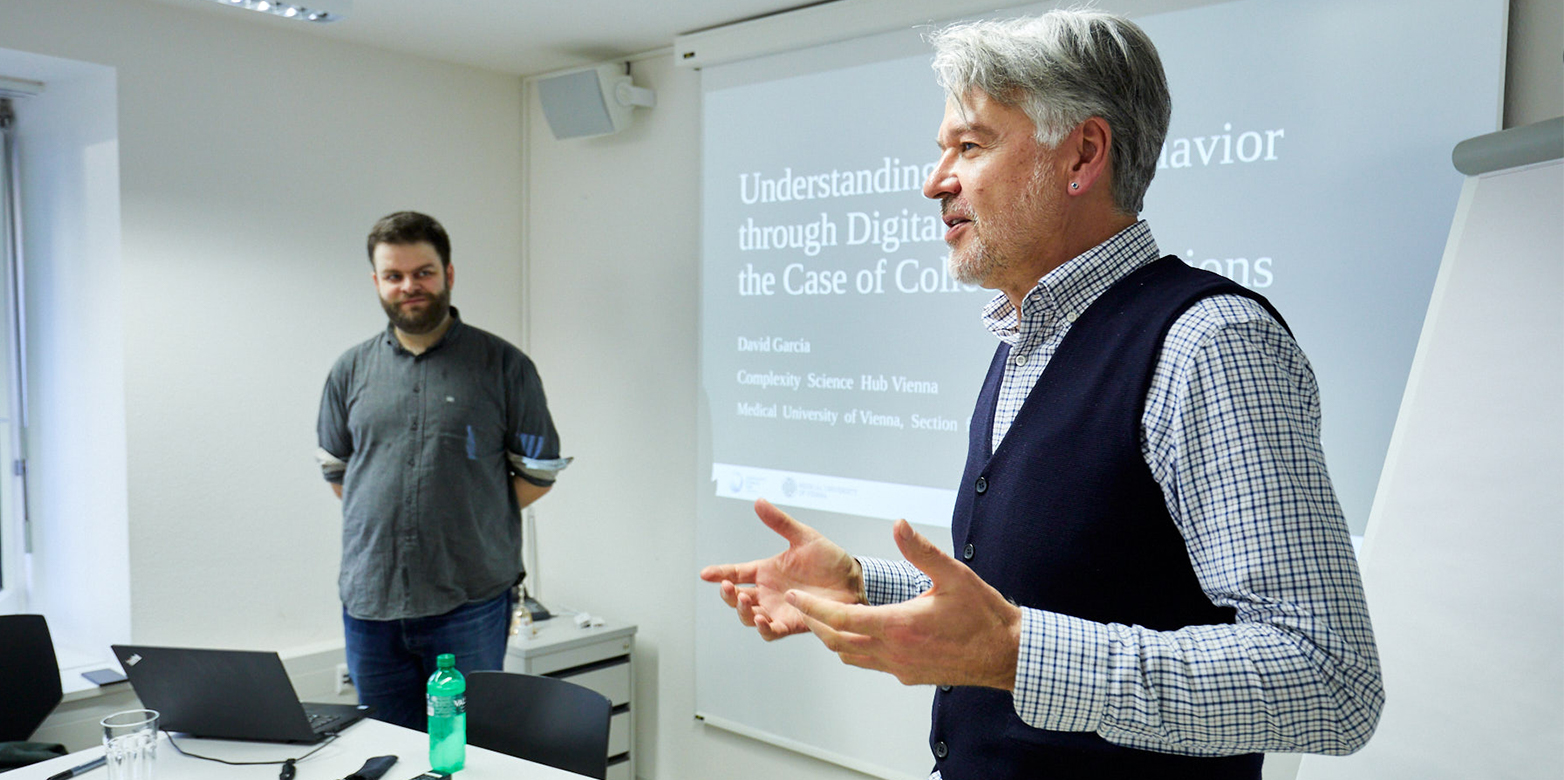Understanding Human Behavior through Digital Traces: the Case of Collective Emotions
Dr David Garcia is a computational social scientist who focuses on explaining social phenomena through computational models of human behaviour. He is currently a group leader at the Complexity Science Hub Vienna and Medical University of Vienna, Austria. We would like to warmly thank Dr David Garcia for his visit to the ISTP and his interesting and insightful talk.
by Felix Zaussinger

When Dr Garcia explains his work, he is often confronted with a mainstream response: “Ah, you are working with Big Data!” While many politicians love to use this buzzword whenever the opportunity arises, he argues that data did not only get bigger. Dr Garcia advocates for a more nuanced discussion of the recent explosion in data availability. He prefers to use the term “new data”, emphasising that there are other key dimensions apart from size: today’s data can also be fast, long, deep and mixed. In his research, he tries to exploit all of these dimensions to quantitatively and empirically test social science theories through computational models of human behaviour.
The very questions he poses in his research touch on highly relevant contemporary issues: how do social media affect the emotional state of its users? What are its impacts on teenager suicide rates? How can gender inequality be measured online? Are shadow profiles really a thing? What is the role of collective emotions for the synchronization of social behaviour and social resilience mechanisms? Is the online discussion regarding vegetarian versus meat-based diets getting more polarized? Garcia starts out by digging into the existing social sciences literature to properly understand the issue at hand and then formulates a research hypothesis based on established theory.
Garcia’s approach for exploring such “multi-level social phenomena” can consist of traditional experiments or by exploiting so-called “natural experiments”. Natural experiments are events that are external to the researcher control, such as the 2015 Paris terrorist attack or the release of a new Netflix series and equally allow for identifying causal impacts. He then combines agent-based computational modelling and survey-validation techniques to ultimately create large-scale digital traces – in other words, he intelligently combines the footprints people leave online or on digital devices.
We thank Dr Garcia for visiting ISTP and sharing his interesting thoughts on computationally modeling human behaviour!
For more information about the talk and the full report, please visit our Reports page.